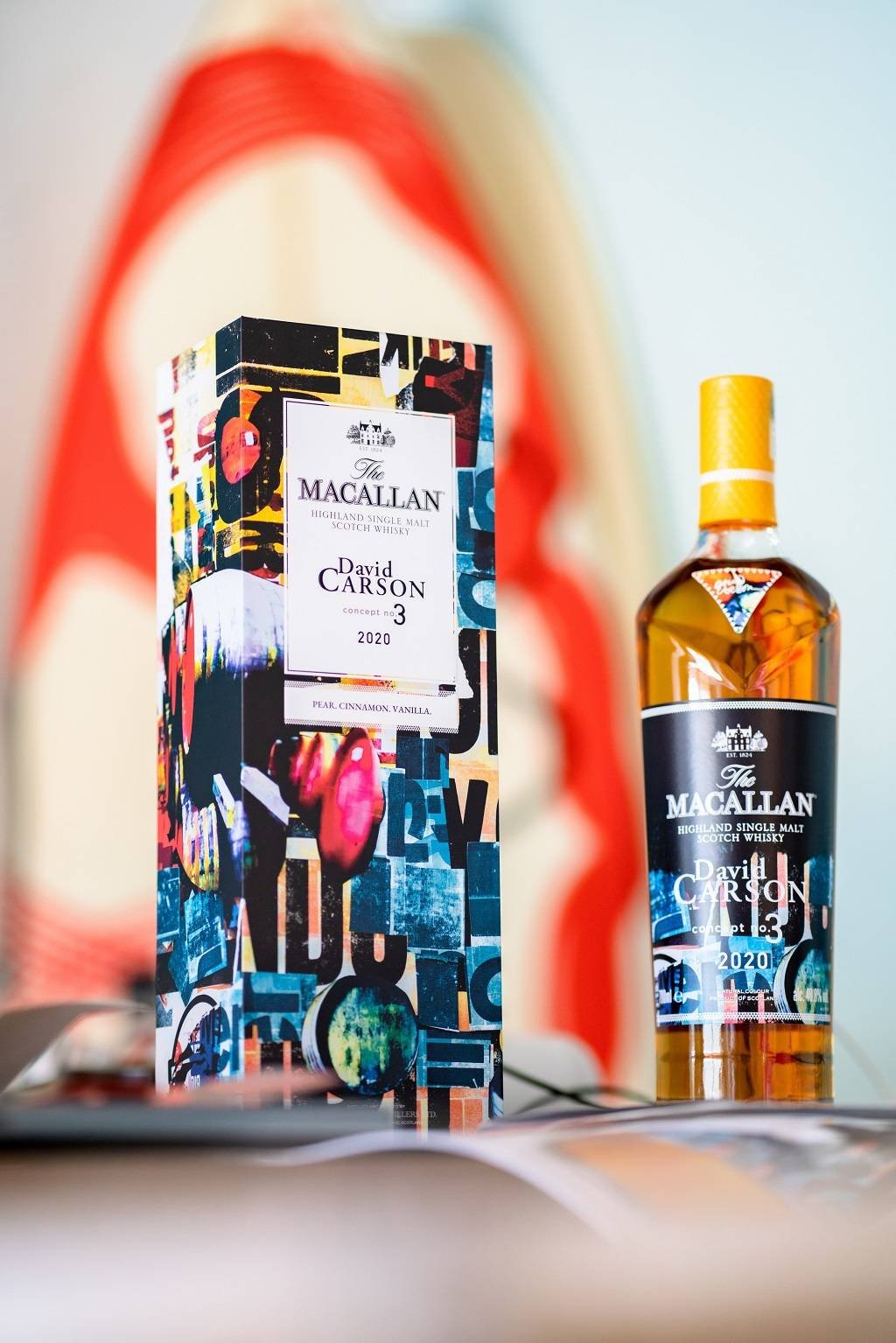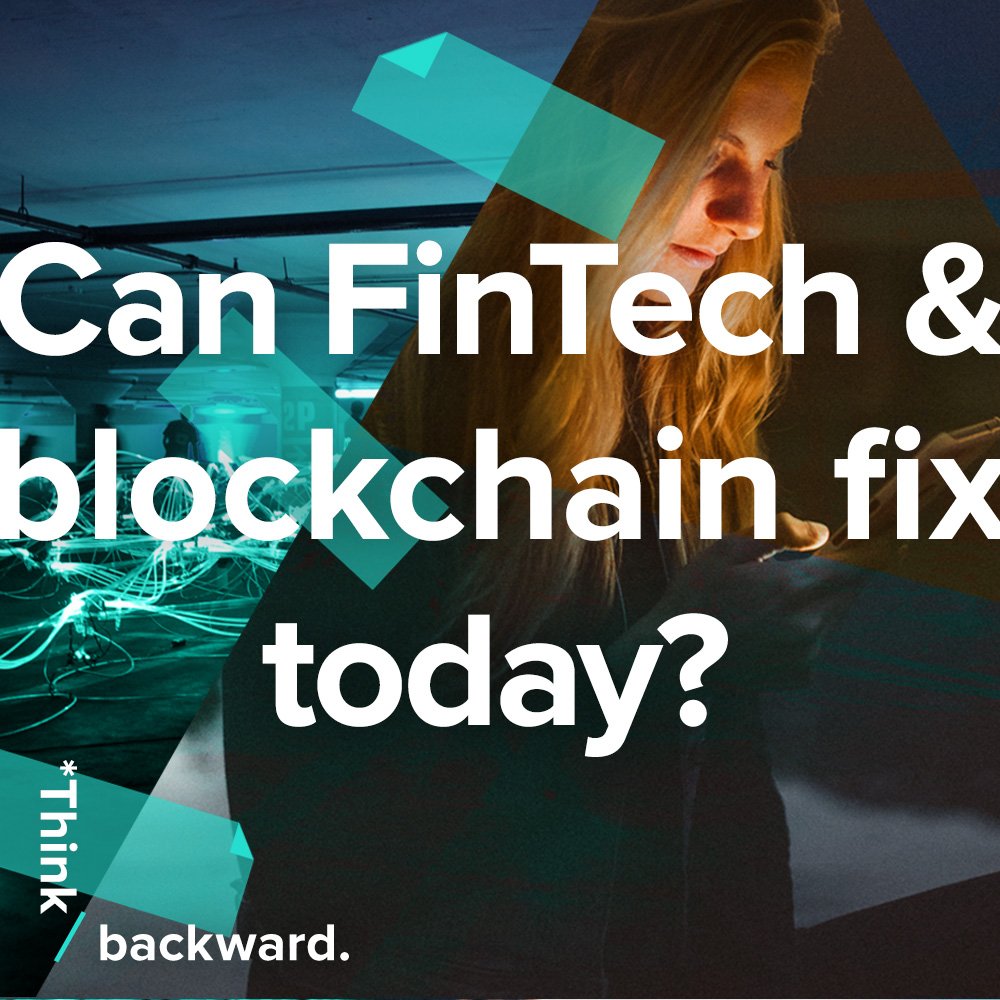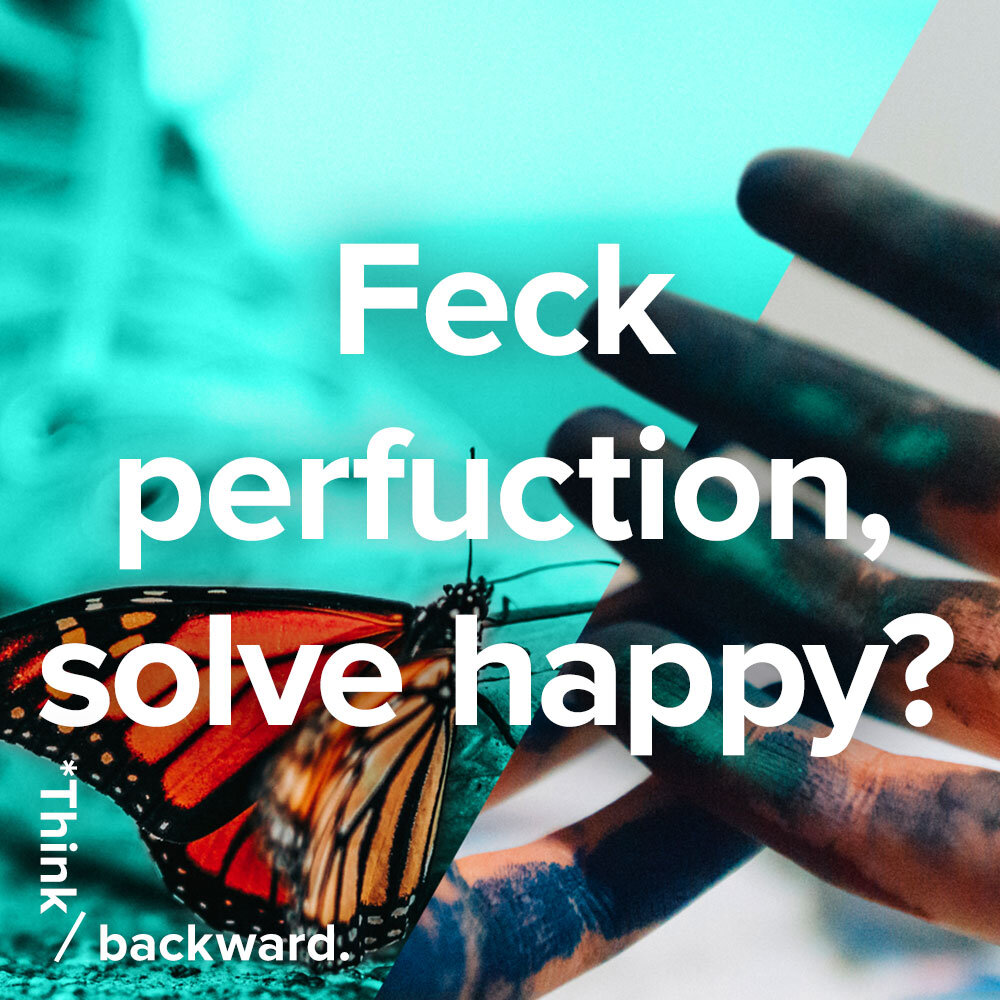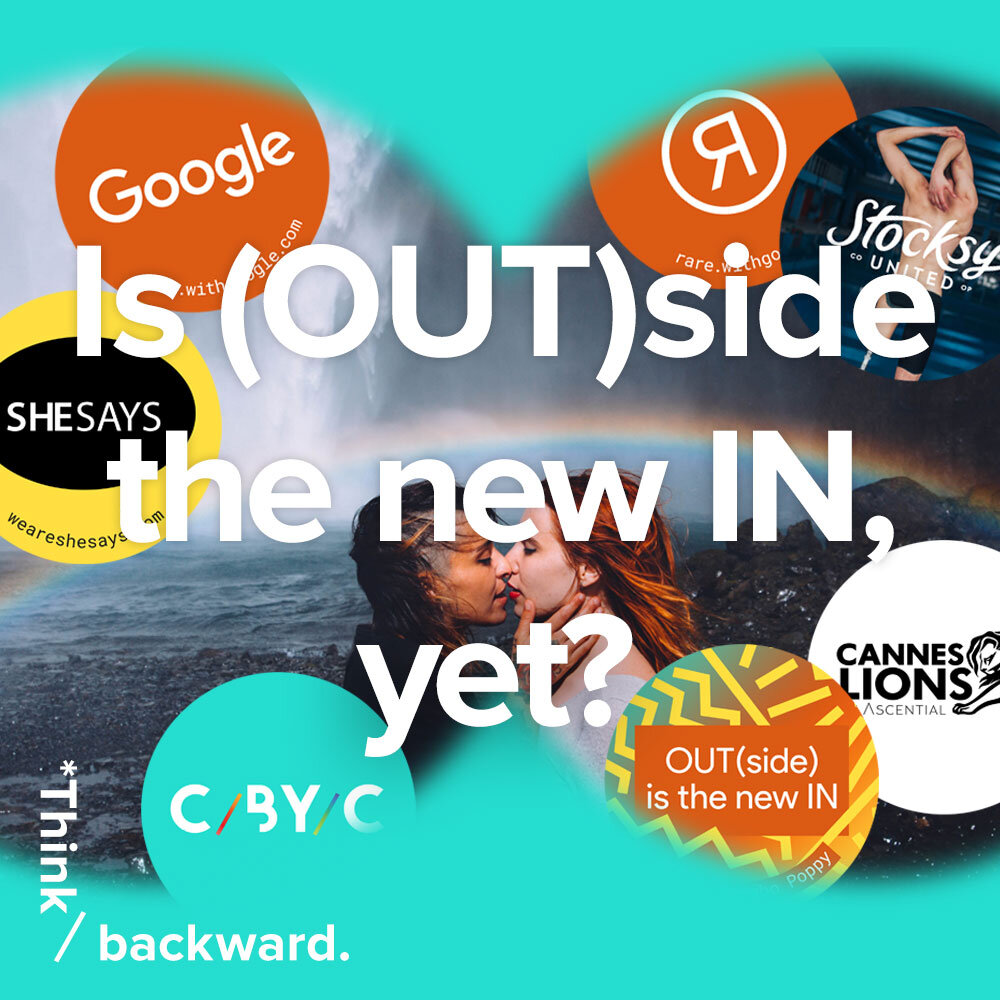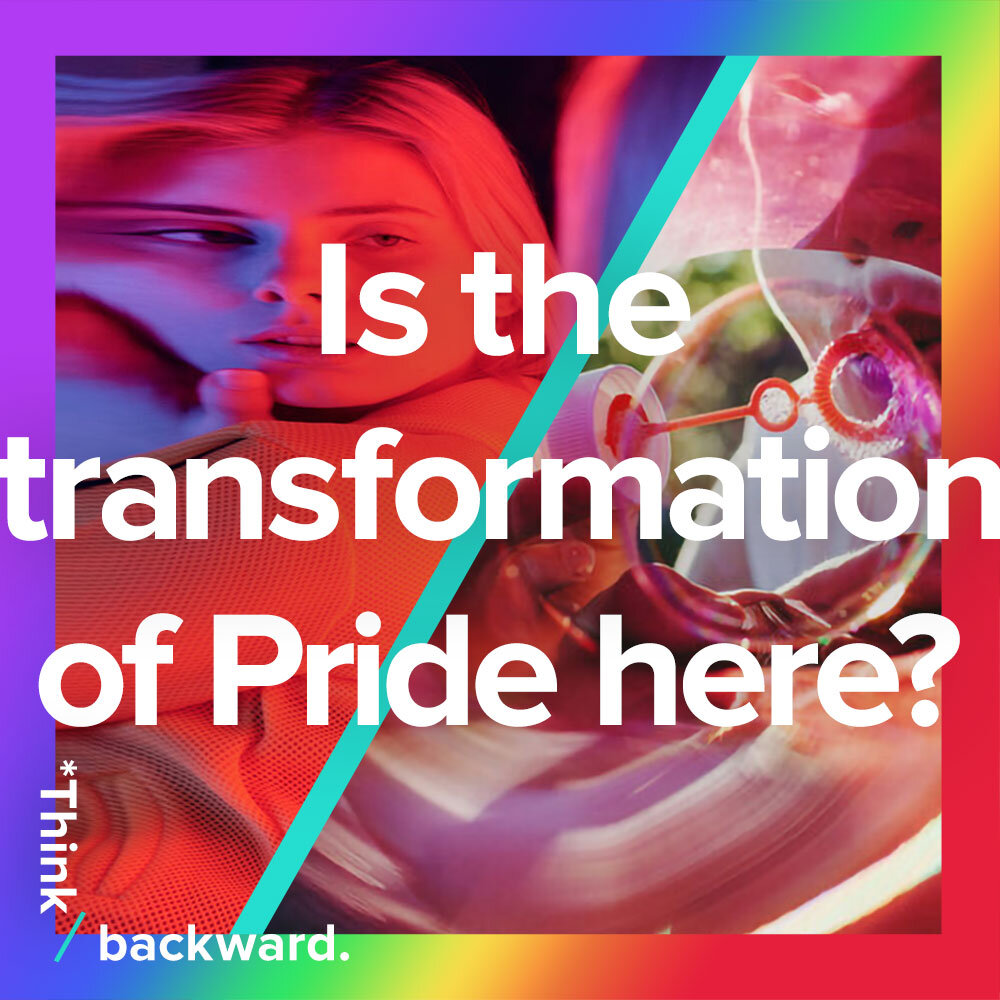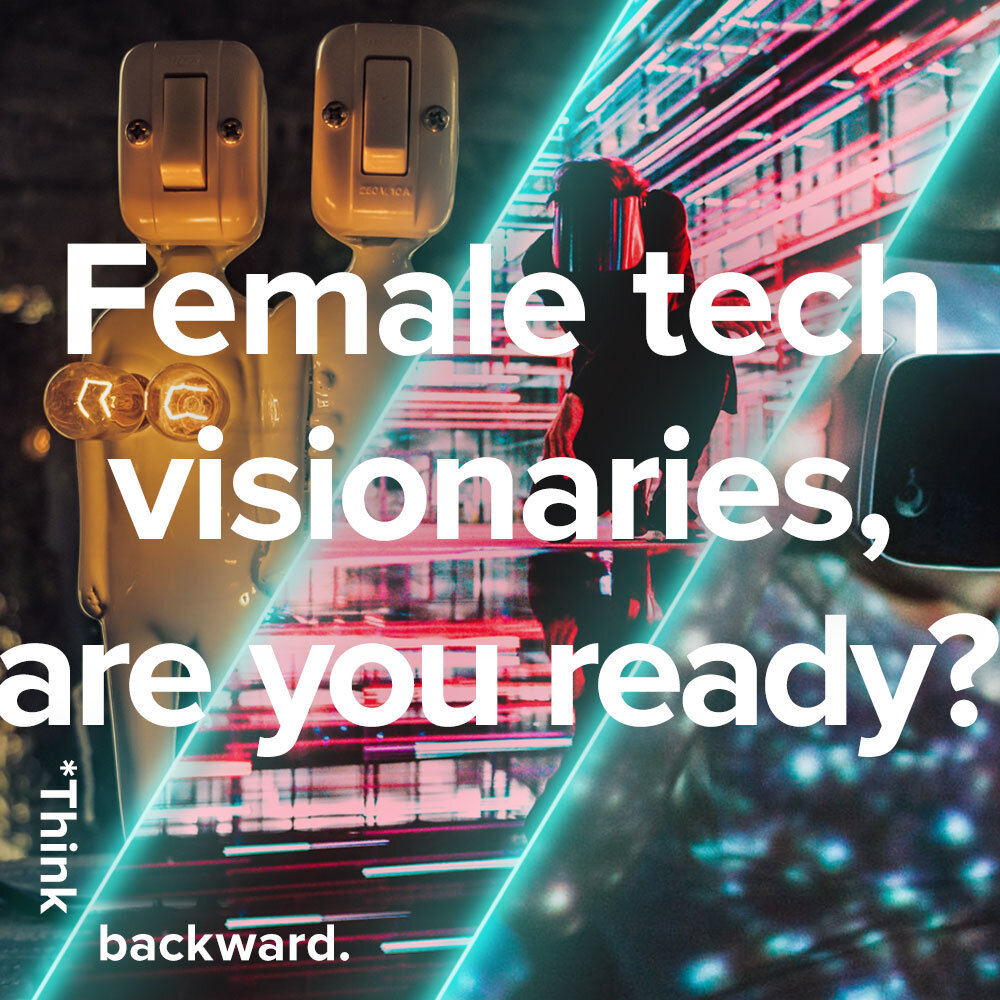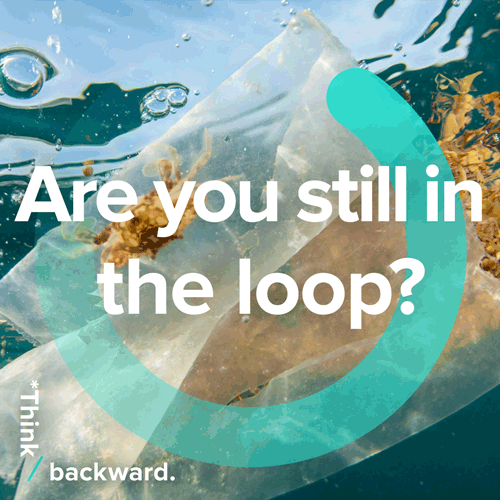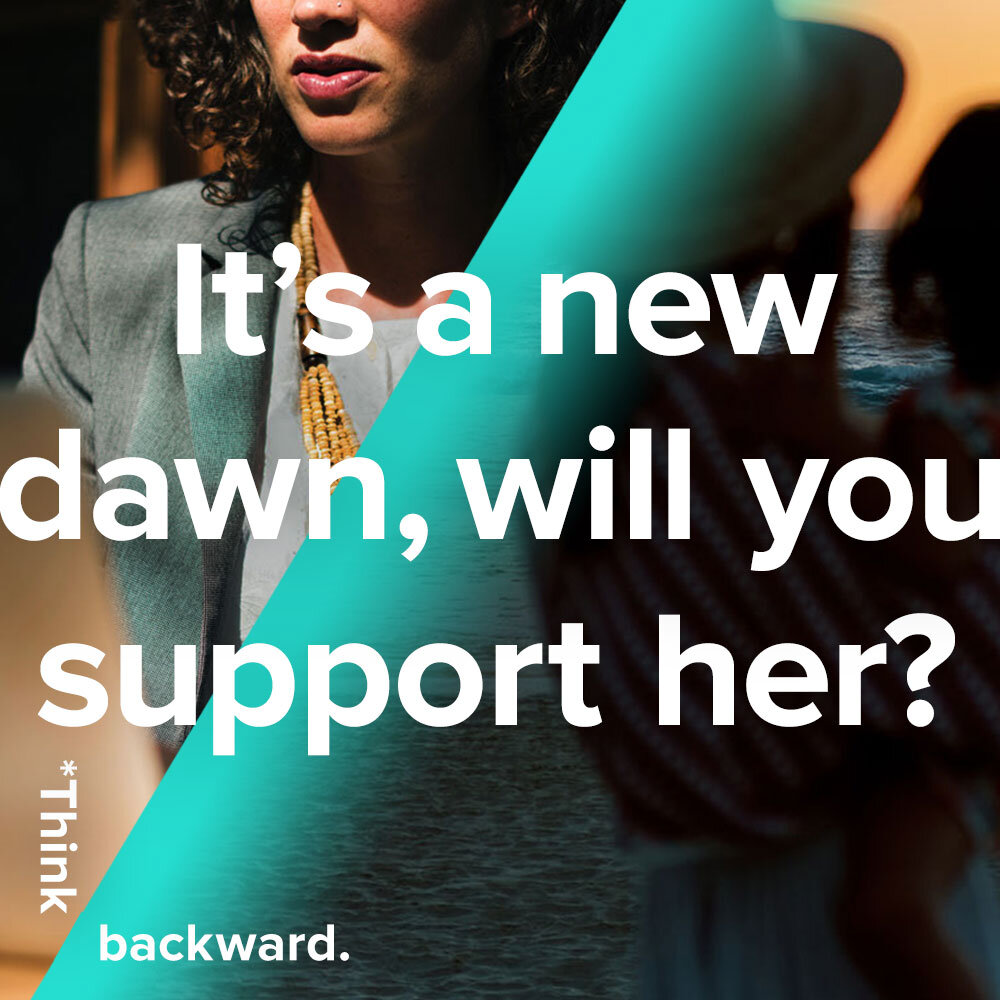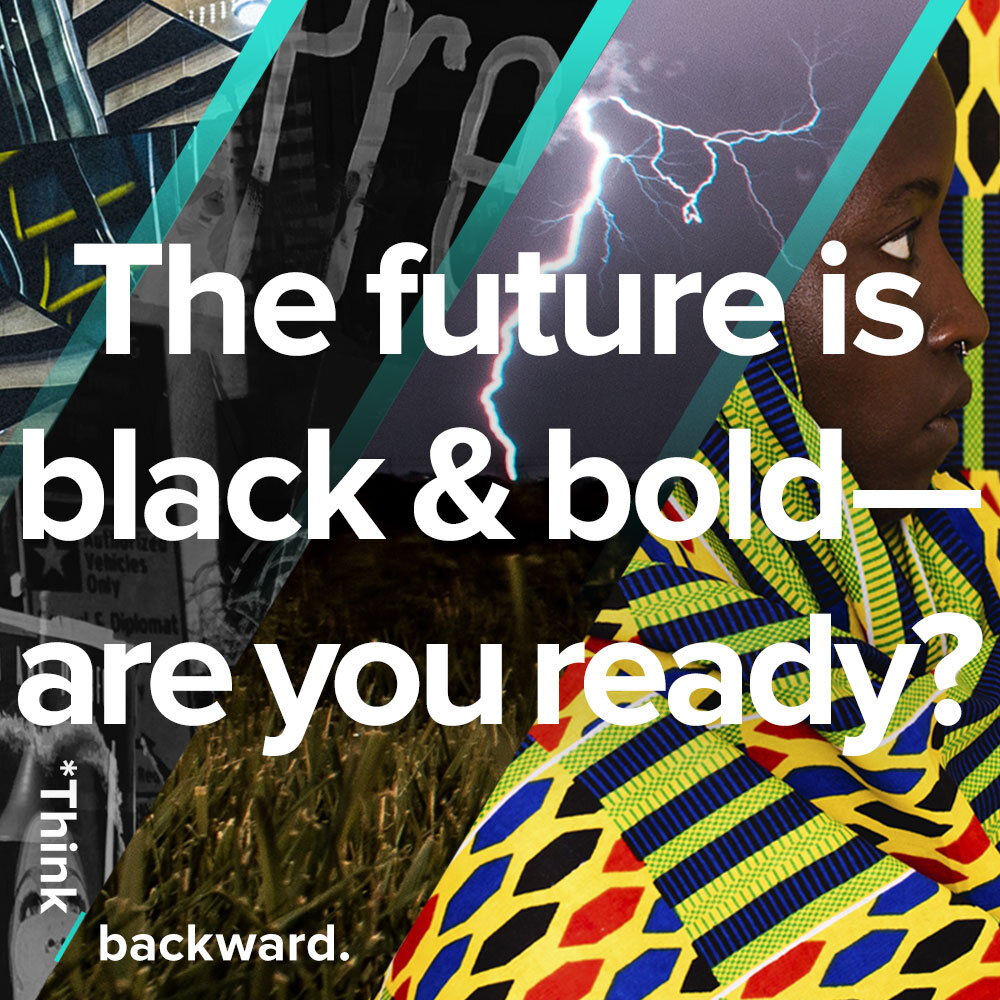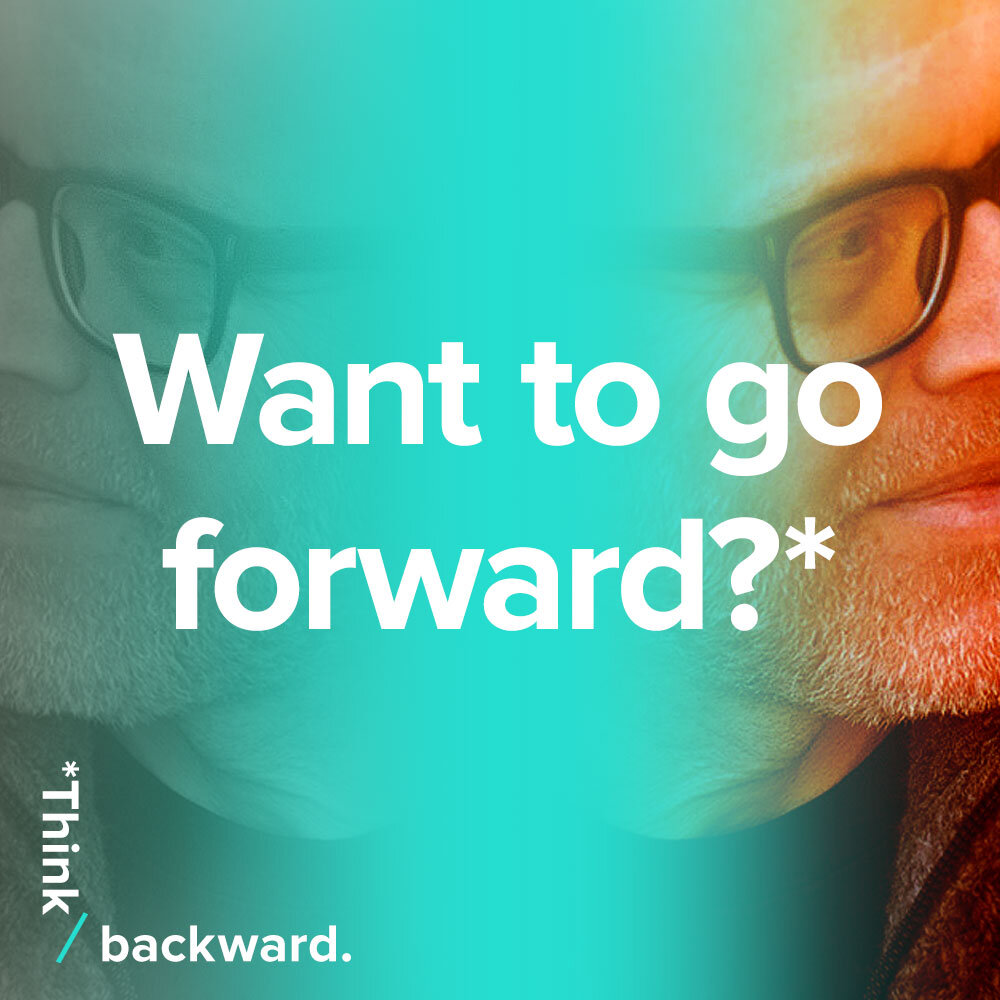“_________”
OPEN Topics talks with David.
That is why you need a design specialist who really has that eye; if you don’t have that eye, you’re never gonna do amazing work, you’re gonna do solid work, it’s a little bit like decision by committee, you’ll rarely get anything horrible and you’ll rarely get anything great.
— David Carson
Graphic Design Icon
/
Cannes Lions Exclusive
— Curiosity led me to David Carson, but our meeting was a long time coming. David has been part of my greater network since my earliest days in New York. And like many designers, I’ve admired his free-spirited, rule-breaking design approach — exemplified in his work for hyper-influential Raygun music magazine, Samsung, Nike, Armani, and so much more.
I first reached out to David pre-Covid to arrange a meeting while I was in Germany and he was doing a design residency in The Netherlands — and then came 2020. So, once I found out that he was speaking at the Cannes Lions International Festival of Creativity, I sent him a message and asked to meet for lunch.
Et voilà, on my first morning in Cannes serendipity intervened and I ran into him at a crosswalk. I don’t know how I recognized him wearing a baseball cap and sunglasses, but I did…must be the designer’s eye.
Talking to David reminded me of what I love about graphic design, and why being in the creative field, and having “the eye,” is a powerful gift.
Enjoy this bold conversation on art, design, craft, and communication — and why curiosity is the key to longevity.
What would you call yourself?
David — I would say a graphic designer. If you really wanna start analyzing it and say, well, maybe what I do is more graphic arts…And then we have commercial artists, nobody wants to be called that.
Recently, I’ve been consulting with a law firm on a case that is going to the (U.S.) Supreme Court about whether graphic design is art, and I thought, well, that’s interesting that they came to me — they didn’t go to the organizing body of the graphic design field, the American Institute of Graphic Artists (AIGA).
“My role is to keep pushing by saying, yes, graphic design is art, yes, and it’s expressive. There are people who say, no, graphic design is not art, it’s supposed to communicate, so you’re saying that fine art doesn’t communicate? There are lots of ways to communicate.”
Why do you think they approached you?
I would guess that’s because these lawyers are hoping it goes in favor of that it’s art, and I would say that the AIGA, a kind of ‘New York mafia’ wing, for way too long has has been trying to make it more of a philosophy or science or business and get away from anything art. Graphic design seems to be a much devalued craft from when I started, even though people don’t seem to realize that it’s all graphic design in a sense.
Do you have an example of that devaluation?
This whole conference (Cannes Lions) is graphic design, yet there wasn’t a session about design, the importance of fonts, and the importance of the message you intend to show before someone starts reading — how do you feel about it, is it consistent? That is totally void from this conference. And then there is the AIGA, the biggest graphic design organization in the world, yet they are not involved.
I have noticed that a lot of recent rebranding, especially with high-fashion labels, has a look of sameness, and considering that a logo is supposed to be the face of your business, maybe only using Helvetica to show your aspirations and values seems lazy.
Which leads me to ask, on the topic of aspirations and values, what do you see as the typical role of creatives post-2020, and in a perfect world, what should that role be?
Look, I enjoyed the award shows each night, as there was a lot of work of substance and good social projects, reflecting the human condition. I was pleasantly surprised to see the cause ads be celebrated. But I was also disappointed that the big winners were exactly what you would expect, like a funny team of funny people, getting in a car, starting their own business, and it’s all outrageous and funny and so advertising and then the most creative company in the world is...Burger King? It’s like trying to convince people to buy stuff that they do not need, where is the satisfaction in that?
I am not seeing some dramatic change now that weʼve been through the pandemic.
But, that said, with the pandemic, the war, there is so much going on, maybe the role of design could be more important than ever and we should step up as designers.
For example?
I noticed every day for five days you get a glossy magazine at the conference even though glossy paper is the worst thing for the environment, it doesn’t disappear, it’s bad for the water system. We need to call BS on that because we are all in favor of saving the planet and yet we have this horrific glossy oversized magazine every day from people who say they are trying to make the world a better place.
We should be calling out stuff like that; the problem is that designers are too quiet and shy.
Do you think that your role as a graphic designer has changed?
Not dramatically. I feel that I am one of the few out there still pushing for artistic values and subjectivity, abstractness and the art value of graphic design.
Surely you are not alone.
Maybe so. In some article, graphic designer and Cranbrook instructor Edward Fella said, wow, we’re the last two standing.
The last 20+ years have been tough.
There was all this excitement in the air in the early ʼ90s, with all this experimentation going on…My role is to keep pushing by saying, yes, graphic design is art, yes, and it’s expressive. There are people who say, no, graphic design is not art, it’s supposed to communicate, so you’re saying that fine art doesn’t communicate? There are lots of ways to communicate.
I feel like a bit of a dying breed, and I do not see that changing anytime soon.
I’ve got all this work from these collages that I was just doing for fun, for the past couple of years and now they’re on whiskey bottles and Porsches… so there are some good signs.
What surprised you most at the Cannes Lions?
I was constantly surprised that every day people would come up to me and say, oh, wow, I didn’t know you were here, oh, gosh, I’ve followed you my whole career, you’re the reason I am in so and so.
So that’s nice, but also frustrating because there are still people here who want to learn, but that was not available at the conference. I tell students, people or whoever, no, you don’t have to let the software line up those columns for you and decide the distance between columns, and they’re like oh wow, yeah! I mean this is basic, but we’ve just gotten so automatic and lazy in a sense. But let me add, I don’t dredge through each day saying it’s not the good old days, just pointing out.
Anything else?
Yes. You know how these events can sometimes skew younger? Watching all those Cannes Lions winners, it sure skews male. This is a male industry, heavy duty, it always has been but it was so graphic to watch, almost without exception, there would be one or two women and all these men like, yeah, yeah! (aggressive fist pump gesture!) I thought OK, so that hasn’t changed much.
“Advertising is a male industry, heavy duty, it always has been but it was so graphic to watch, almost without exception, there would be one or two women and all these men like, yeah, yeah! (aggressive fist pump gesture!) I thought OK, so that hasn’t changed much.”
Speaking of changes, what are your thoughts on the Metaverse and digital art?
That’s where everything is going. When I was driving in here from the airport, seeing statues, big heads mostly, I’m thinking, wow, in the future, those will be interactive and won’t just be sculptures for birds to crap on. They’ll probably talk to you, probably hear you and tell about what they did.
It is always so hard for each generation to realize that they are the super old-fashioned days, it’s like, “Remember 2022? They still used to have those old phones you had to unlock with a password, and you always had to charge.”
Statues are a great example of something that you can probably interact with in the future and not just drive by.
And this makes you feel...what exactly?
I do have basic issues with this development. Is this a good thing, that you never have to go out but just put this thing on your head and never leave your chair and yet see the world and do all these things? For certain groups if you’re bedridden or sick, maybe.
I think it’s inevitable…but I am a bit uneasy.
I heard you were stuck in the Caribbean for a year? What is it like to be back in the States?
I never wanted that to happen. Now that I’m back, I don’t feel like, oh, well, now everything is different. Other than thinking, now is really a time to get out of the States, between the gun laws, the abortion thing and the whole Trump thing.
Tell me more about leaving the U.S.
Democracy was a great example and it failed, you just have to look at America, it didn’t work, it got us to Trump and the insane gun laws, and now old men telling women what they can do with their bodies.
Of course, there are wonderful places and people in the U.S. but it failed; Trump is the top contender for the next presidential campaign.
What’s next for you?
I’m still kind of doing what I’ve been doing, hobbies like surfing and traveling, checking emails to see if any cool jobs came in.
I was involved with a group that was doing an interactive, virtual-reality art museum, so that was pretty interesting.
And later this month, I’ll be meeting with this group in Scotland that is putting together a pretty interesting gaming thing for young professionals. I am intrigued by that because that is not an area that I have been involved in, and I would like to see how I can help with these environments to make them feel interesting or real.
Do you have any tips for long-term relevance?
You can’t force it, you have to have that natural curiosity. I read an interview with David Byrne, who said that he still goes to all these clubs to check out new bands, to see who’s coming up, but all his friends and people over the years that he’s seen at all these events, none of them go anymore. And he said, what happened? Did they just lose their interest in new music, why is that? I look back to the early ʼ90s explosion of experimentation in graphic design and very few of those people I even hear from anymore.
You have definitely stayed relevant.
Last year was so funny, I had my own whiskey that came out, I have a skateboard, surfboard, basketball, towel…to have your own skateboard and whiskey come out in the same year in your 60s is kinda funny.
My point: Just stay involved, because the reason you got into it hasn’t changed, your basic curiosity of art, design, communication, or whatever, so why let it go?
That is inspirational.
I’ve had a couple of comments on my talks where people say wow, you reminded me of why I got into graphic design and advertising. And when they ask me why I did, I say because it’s fun, it’s creative, you can make a living, you don’t have to dread watching the clock and wait for vacations, so it’s a great industry.
Does it take confidence?
It must on some level. I’ve never thought of myself as a particularly confident person, but I never questioned the graphic design sensibility that I have. I don’t know where I got it but I’ve run with it.
For me, confidence, sometimes you have to work at it or you have to force it almost. I don’t have any question that I can take a menu and make it look better, whereas walking into a big room of strangers is a different type of confidence.
Even in talks I rely on the imagery because it’s so easy to talk about the work as opposed to yourself.
Do you have a dream project?
I’ve had a lot of them, from airlines to car companies to computer companies. But my dream project would be something that I haven’t done before, something that would give me a lot of creative freedom, something that is going to be visible and hopefully in an area that I haven’t worked in.
Do you do anything differently when you work with large conservative corporations?
For me, the solution always comes from the brief itself, what is it we’re trying to say, who’s the audience — all those things that all designers use and I can’t look at that and not get some feelings…Like ok, let’s go in this direction…whatever it is, that sets me going.
I’ve done Microsoft, Armani, a very conservative electric company. It’s fine-tuning, it’s the little details that a designer should be able to do as well, not just all the crazy fun stuff or stuff that people remember from Raygun music magazine — it’s part of the craft. As a graphic designer, you should be able to do a very conservative corporate insurance company and an off-the-wall skateboard company, and I can, I can make them both better.
What do you see as one of the biggest challenges for designers today?
Many designers are relying on the software to make decisions for them, but you make those decisions, that’s why you became a designer, that’s why someone hired you, for your eye, not for your software expertise.
If they did, there are a million people out there that know programs really well. Which is why it becomes more important than ever to make the work come more from you and not the software, then if you work that way, you’re gonna enjoy it more, you’re going to do your best work, and it’s not going to feel like work, you’re going to have some ownership.
What are some of the challenges of working with large corporations?
Sometimes at large corporations, the art director, who may or may not be a designer, comes up with a really basic little plan for an idea, then turns it in to an outside company at night, and then in the morning, picks up the deck. The outside company (consultancy) made all these decisions about this and that and then you take credit for it, and I just think, wow, it’s so removed from anyone actually designing it.
It’s all about how quickly we can get this looking like it’s on a billboard, a watch and everything. And it basically works, but it could go to the next level where people feel it, not just like the new colors of the front of the phone, or the horse jumping in the field in an ad.
The advertisements already have the brand name and something on the four corners of the page, that doesn’t change, so it’s just about dropping in the photo of a phone.
That’s the problem with this approach, it basically works, but you rarely see anything terrible and you rarely see anything great. It’s a curse, in a way.
“I can live with that, it works, it functions, you’ve got enough people to sign off on it, and out it goes into the world. Nobody hates it, but nobody loves it, nobody’s referencing it, nobody’s trying to copy it, and that’s where the majority of the work ends up.”
Parting thoughts on the Cannes Lions, what you’ve seen, experienced and what you would like to see more of.
Overall, it’s a great event, it’s a great area. I’m definitely planning on coming back, but as a graphic designer I was a little disappointed, I didn’t see anything that really addressed design and there were a lot of designers in the audience, I met a lot of them.
I’d like to see them get a little bit more back to the craft. Graphic design, regardless of the medium, screen, tablets or whatever, it might even be paper — that’s OK too — is huge, and I didn’t see it addressed.
I often missed good sessions, but I didn’t see ones that sounded like they were addressing that, so hopefully next year, we’ll see a little more of that.
What type of session would you like to see at the next Cannes Lions?
How can you take your craft and actually improve the message that you are sending, not by funny copywriting or tricky copywriting, but by showing the feeling of what they are saying. That’s harder to do. That’s why you do need a specialist who really has that eye; if you don’t have that eye, you’re never gonna do amazing work, you’re gonna do solid work, it’s a little bit like decision by committee, you’ll rarely get anything horrible and you’ll rarely get anything great.
It’ll be okay, it’ll be like, I can live with that, it works, it functions, you’ve got enough people to sign off on it, and out it goes into the world. Nobody hates it, but nobody loves it, nobody’s referencing it, nobody’s trying to copy it, and that’s where the majority of the work ends up.
It’s about using emotion and humanness to help send a message, that’s the area that’s the most fulfilling to work in and potentially really powerful.
Thank you for sharing your insights with us, David. See you around.














